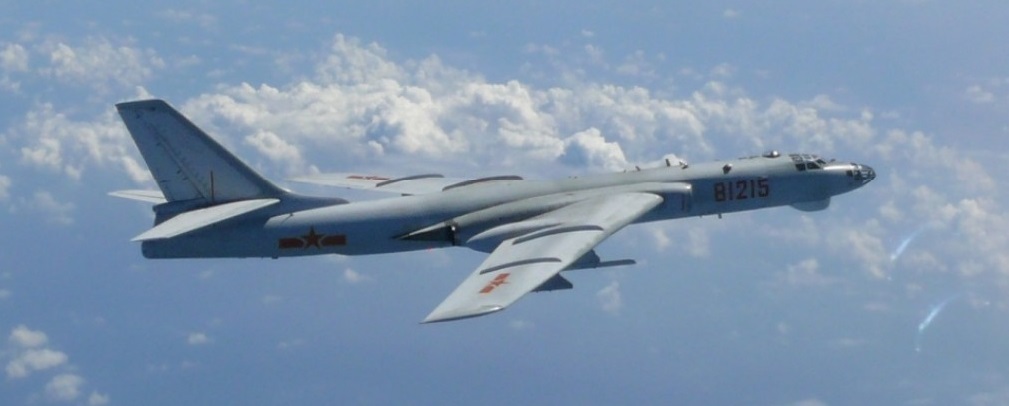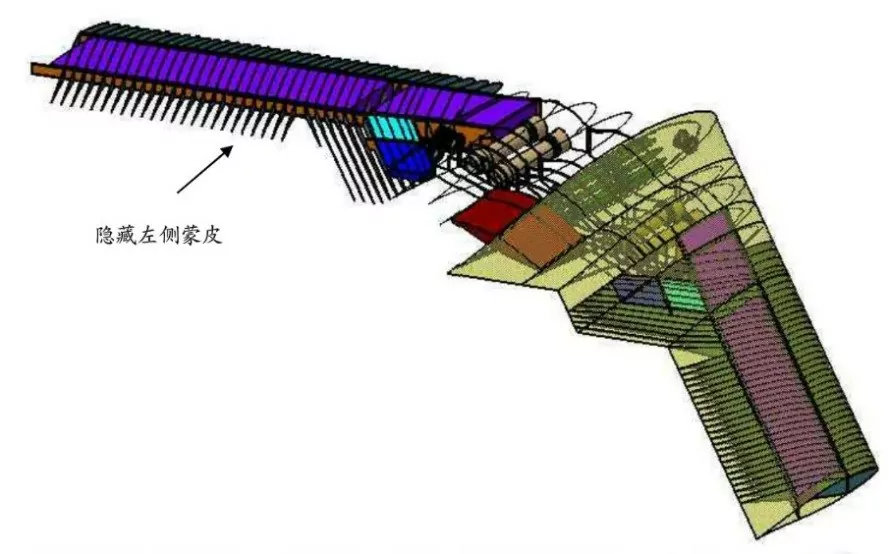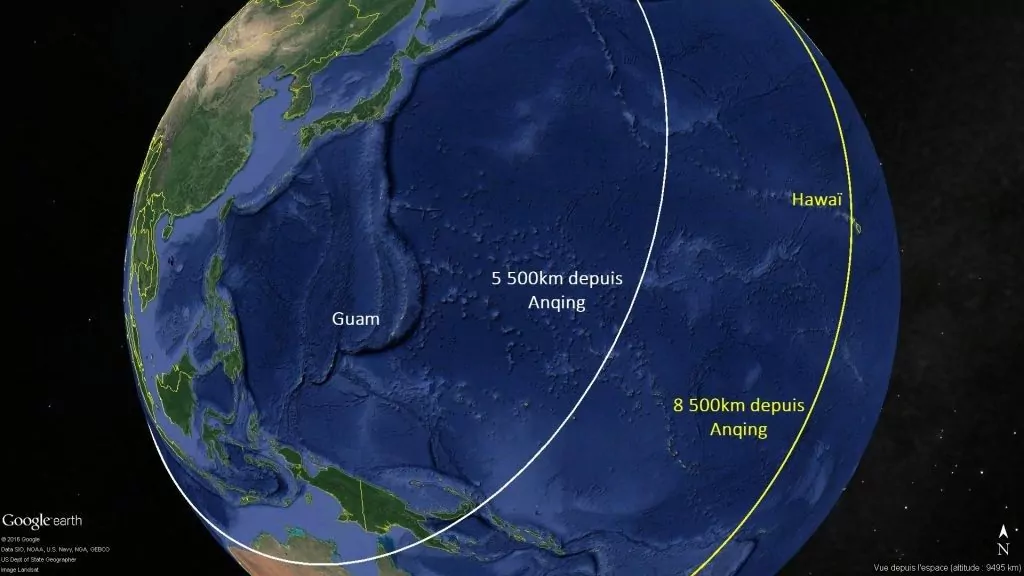
The PLA Air Force’s “Silver-Bullet” Bomber Force
The PLA Air Force’s “Silver-Bullet” Bomber Force
Although China is widely seen in the West as a major future opponent and rival in terms of global economics and political influence, its current force structure and its evolving joint operational doctrine is still largely consistent with a defensive orientation (Defense White Paper, May 25, 2015). However, China’s rising ambitions have led to dramatic reforms in recent years, which mean for the first time in its history, the People’s Liberation Army Air Force (PLAAF) will shift its focus from primarily territorial air defense to the ability to conduct offensive and defensive operations as well. [1] Most attention has focused on the introduction of new modern multirole combat fighters (J-10B/C, J-15 and J-16) and the development of next generation aircraft (J-20 and FC-31 stealth aircraft, Y-20 indigenous transport aircraft).
China has strengthened its air and naval power projection capabilities dramatically in the past 10 years, but, in general, the PLAAF has still a defensive composition. A majority of its aircraft are fighters and only a very small percentage are offensive or multirole-capable types. Specifically, compared to the other services, the PLAAF still lacks a real ability to project power far from its borders—its strategic airlift, aerial refueling and modern strategic bombers all lag behind in development. China’s small bomber fleet consists of three Bomber Divisions (8th, 10th and 36th) with six Regiments operating a variety of H-6 bomber variants. The H-6 itself is a venerable aircraft derived from the Soviet-era Tu-16, which was first delivered to China in 1958. At best, this force represents a sort of ‘Silver Bullet’, capable of striking targets beyond the reach of the PLAAF’s regular assets, but they are in no way a strategic force.
Compared to recent Chinese fighter developments, the development of strategic bombers is surely less impressive. It will take several years for the remaining older H-6 variants to be replaced with the latest H-6K armed with KD-20 air-launched cruise missiles (ALCMs). However, the oldest versions urgently need to be retired. A replacement for the H-6K can be expected to begin testing in the next 5-8 years. Consequently, observers and enthusiasts alike are speculating when a new long-range—and probably even true strategic—bomber will appear.
PLAAF Officially Confirms Development of New Heavy Bomber
On September 1, 2016 during an interview given at the “2016’s PLAAF open day” in Changchun, Chinese Air Force Commander General Ma Xiaotian confirmed to the media that development of a new long range bomber is underway (Global Times, September 3, 2016). While presenting the latest H-6K to the public he announced that “the Chinese air force has now entered a phase of transition, we want to build a powerful Air Force both defensive and offensive.” Pointing to the H-6K he added: “Our long range strike capability has much improved compared to the past, and an even bigger improvement is coming. We are developing a new generation of long bomber” (Weibo, September 2, 2016).
The relative openness is surprising as is the fact that it has been discussed in other media. Though it largely went unnoticed by the Western media, China Daily reported on July 2015 that, according to Chinese military officials, a new strategic bomber should be capable of striking targets beyond the second island chain without aerial refueling, while carrying a payload of at least 10 metric tons. [2]
Nearly two years later, reports are becoming more frequent and reliable. Many interpret this openness as a hint of an imminent unveiling. Two reports give additional credence to this. In December 2016 China Central Television (CCTV) displayed a notional rendering of a future bomber—surely fan-art only as a placeholder—but in itself some sort of confirmation. Later, Retired Rear Admiral Yin Zhuo, director of the PLA Navy’s Expert Consultation Committee and also a regular media commentator on Chinese military developments for CCTV, noted when asked on when the next-generation strategic bomber will make its debut, “we should have some patience.” Though his statement does not reveal any specifics, it is typical of the way China discloses such major programs to its public. In 2009, for example, Lieutenant General He Weirong, announced that “a Chinese fourth generation (by Chinese definition) fighter (referring to the J-20) will fly soon and be operational between 2017 and 2019,” a timeline which has been borne out by events.
Also widely admitted to the public is that the current bomber-force is no longer adequate and that China has never developed such a large-tonnage and long-range strategic bomber before. Consequently, the development issues are technically demanding. Another frequently-cited military expert Li Li added that ”the aircraft’s aerodynamic configuration will be quite different from that of a supersonic bomber. It may be a more realistic solution to select from the stealth capability and supersonic penetration.” Finally, most reports point out that “having a strategic bomber will become one of the symbols of China’s air force as a strategic service” (ChinaMil, February 17).
Program Status
Although many facts are still unclear, some information is available regarding this program:
- The primary contractor for the new bomber is the Xi’an Aircraft Industrial Corporation (also known as the Xi’an Aircraft Company Limited) XAC and its affiliated no. 603 Institute.
- For certain areas like the wing geometry, the S-shaped dorsal engine intakes and the engine’s exhaust as well as the flight control system of the new bomber is said to have gained assistance for technical solutions from Shenyang’s SAC and its experience on the Sharp Sword UCAV.
- The Chinese aviation industry seems generally confident that through the J-20’ and Y-20’s development (as well as via international cooperation) AVIC has gained enough expertise to overcome any eventual technical difficulties including engine location, air intake design, material selection and stealth technology.
- The new strategic long-range bomber—officially known so far only as the “strategic project”—will probably be designated H-20 and has been under development since the late 1990s, or more likely, the early 2000s.
- The PLAAF was reportedly undecided for some time about the requirement and what type of bomber would fit this best. Consequently—and similar to the alleged new tactical- or regional-bomber design under development at SAC—various configurations were studied ranging from supersonic configurations thru conventional and even quite innovative designs: one is said featuring a delta wing geometry and canards while others were more conventional to finally a subsonic stealthy flying wing design (Chinese Military Aviation Blog, February 12). [3]

Given the great secrecy of this program and the urgency of the Y-20 program, it was reported that the H-20-project only gained full momentum after the successful flight of latter in late 2012 or early 2013. Besides General Ma Xiaotian’s public confirmation in 2016, a first hint of the H-X’s progress was a news-report from December 2015 within the AVIC group reported about a digital 3D-mock-up of a “major project” being completed and currently the design is in the phase / stage of detailed design / engineering (AVIC, December 16, 2015). This was again noted in early 2017 by this consistently reliable source, and complemented by the information, that also a quality control system/platform for this 3D-mock-up—now called prototype—has now been established (Weibo, February 10). Also noted again was that:
“China’s next generation bomber has entered the detailed design / engineering stage and the program’s name is at least until its unveiling ‘new type long range combat aircraft’”
Consequently, it is assumed that individual parts of a prototype are already under construction since 2016 (some sources say since March) at XAC. And finally, from June 2017, a PLAAF Spokesman noted:
“The PLAAF has reached the threshold of having a strategic air force and has made historic progress in the field of aeronautics…. The PLAAF will.. enhance its broader ability to carry out a variety of missions” (MOD, June 21).
Following these reports, several scaled-down models were built and test-flown so that by 2011 a four-engined flying wing design similar in configuration to the US B-2 or even B-21 was chosen. Concerning other technical details, one can only speculate but the engines are most likely modified, afterburner-less WS-10A as an interim solution to the WS-15-derivative later. Academic concept papers published after November 2015 indicate that the H-X most likely features engines buried deep within the main wing’s structure to further reduce the radar cross signature (how stealth it is) and twin dorsal S-shaped engine intakes with saw tooth lips similar to those of the B-2 (AVIC, November 2015). The paper it was featured in also mentioned that development work on the ‘cockpit section’ and ‘intake configuration’ was finished by a joint R&D-team from Xi’an and Hanzhong’s 012 Base.

Range and Capabilities
Subsequent reports assess the new bomber to be a stealthy design in order to evade modern air defense systems and penetrate deep into the enemy’s territory (ChinaMil, February 17). Its range has to be dramatically longer than the current H-6K’s (range of more than 10,000 km, and combat radius of over 5,000 km and in-flight refueling-capable) while able to carry a heavy weapons load (smaller load than the B-2A’s 23 tons, but larger than H-6K) for both nuclear and conventional ordnance (China Brief, July 6). The few images published so far suggest a single center weapons-bay—albeit there are artworks depicting two bays—capable of carrying at least six KD-20 ALCMs or any other precision strike munition on a rotary launcher.
Consequently, the new bomber is expected to feature a modern avionics system built around an Active Electronically Scanned Array (AESA) radar with conformal antennas again similar to the U.S. AN/APQ-181 LPI radar. Additionally, it is said to feature a modern electronic warfare-capability and to be also capable acting as a C4ISR node to interact with other sensor platforms like UAVs, AEW- and strategic reconnaissance aircraft to share information and target data (data fusion).
The PLAAF can currently reach with its H-6-bombers, at least 5,000-5,500 km (from the bomber base at Anqing) can be assumed. This range covers the South China Sea, the all-important first and the second Islands chains, Japan, up to the northern part of the Australia, and including Guam. However if one looks a bit further, the next major important U.S. base in a position to support the second line is Hawaii (and Australia). The dominance of U.S. forces in the Pacific region depends heavily these two points. Therefore, a range in excess of 8,500-9000km is likely a minimum requirement for the new bomber (EastPendulum, September 2, 2016).

Timeline for Development
The Chinese internet community is eagerly expecting the unveiling of the new bomber and are anticipating a maiden flight within the next two years. If a more reasonable timeline is used by assuming a similar development-cycle and timeframe comparable to the China’s indigenously-produced Y-20 transport aircraft—a roll out can be expected earliest around late 2019 and the first prototype could fly as early as 2020. [4]
| Development milestone | XAC Y-20 | XAC H-X (estimated) |
| Full-scale mock-up completed (digital/metal) | early 2008 / 2010 | late 2013 |
| Rumors that the #01 prototype was under construction | mid-2009 | late 2015 / early 2016 |
| Three prototypes (#01 – #03) finished, #02 static test | mid 2012 | late 2018 / early 2019 |
| Roll out & first low speed taxiing | late 2012 | late 2019 |
| First flight | early 2013 | early 2020 |
Conclusion
Particularly over the last 10 years the PLAAF has constantly and rapidly improved its capabilities not only by the introduction of new and more capable types but also by structural changes, training, and doctrine. However, specifically compared to the other services, the PLAAF still lacks a real ability to project power far from its borders. Its commitment to the improvement of its strategic airlift (through the Y-20), and modern strategic bombers are all stepping stones on its way to resolving that deficit.
PLAAF Commander General Ma Xiaotian’s September 2016 confirmation that development of a new long-range bomber is underway should come as no surprise. When the aircraft is completed, and is able to enter service in the mid-to-late 2020s, the PLAAF will indeed reach its goal of becoming a true “strategic force”, and be able to accomplish China’s strategic ambitions by acting as nuclear deterrent, being part of the triad, and to provide more effective strike options in order to challenge the dominance of the US-forces within the disputed South China Sea and in the Pacific region.
Andreas Rupprecht is an aviation journalist. He has written several books on China’s military aviation, including “Flashpoint China” and “Modern Chinese Warplanes”.
Notes
- Fravel, M. Taylor: Securing Borders: China’s Doctrine and Force Structure for Frontier Defense, MIT, The Journal of Strategic Studies, Vol. 30, No. 4–5, pp. 705–737, August–October 2007 and “China’s security Problem”, RAND, https://www.rand.org/content/dam/rand/pubs/monograph_reports/MR1121/mr1121.ch2.pdf
- The China Daily/AFP report “China needs long-range strategic bomber: state media”, 7th July 2015 (https://www.yahoo.com/news/china-needs-long-range-strategic-bomber-state-media-084622579.html), in turn cited Kanwa Defense for the 10-ton number so this is not an official number from a Chinese government publication.
- It is worth noting that there are several patents online which, even if not specifically related to the new bomber, are at least related to “flying wing” configuration and aerodynamic research. See for example: (CN105398565) for a Chinese flying wing, B-2 styled, issued on March 16, 2016. The applicant is a company called QINGAN GROUP CO LTD (https://www.diigen.com/supplier/xian-qingan-group-aviation-mechanical-manufacture-co-ltd-china-6479312/), 2 Bonded Warehouse, Fengcheng 12 Road, Shaanxi Xi’an Export Processing Zone, Xi’an, Shaanxi.
- Dates are significant, and it is possible that a new bomber could be unveiled on January 1, 2017—only 9 years after the J-20 performed its maiden flight in 2011, though this would ignore that the development of a new stealthy bomber is surely a more demanding task than a transport.
Additional References:
Rupprecht, Andreas: Dragon’s Wings: Chinese Fighter and Bomber Aircraft Development, Ian Allen (now Crecy Publishing) 26. September 2013, ISBN-10: 1906537364, ISBN-13: 978-1906537364 (https://www.crecy.co.uk/dragon-s-wings)
Rupprecht, Andreas & Cooper, Tom: Modern Chinese Warplanes – Combat Aircraft and Units of the Chinese Air Force and Naval Aviation, Harpia Publishing L.L.C., 29 October 2012, ISBN-10: 0985455403, ISBN-13: 978-0985455408 (https://www.harpia-publishing.com/node/117)
Rupprecht, Andreas: Flashpoint China – Chinese air power and regional security, Harpia Publishing L.L.C., 21 April 2016, ISBN-10: 0985455403, ISBN-13: 978-0985455408
(https://www.harpia-publishing.com/OurBooks?q=node/286)
Rupprecht, Andreas: Small but powerful – China’s bomber force, Combat Aircraft (magazine), Key Publishing October 2016 (Vol. 17/No. 10 – free supplement: Strategic bombers of the world).


